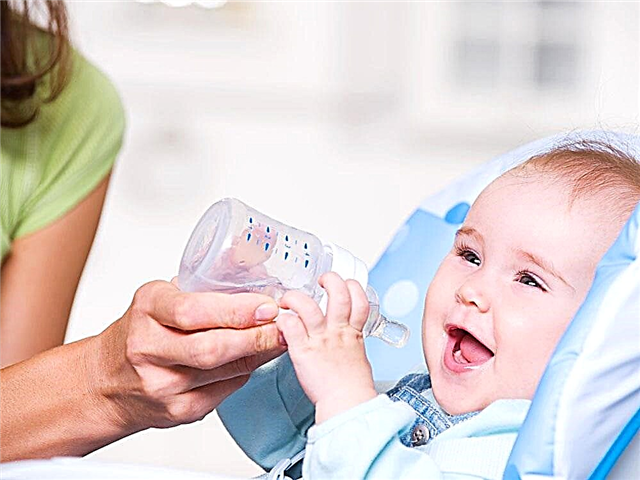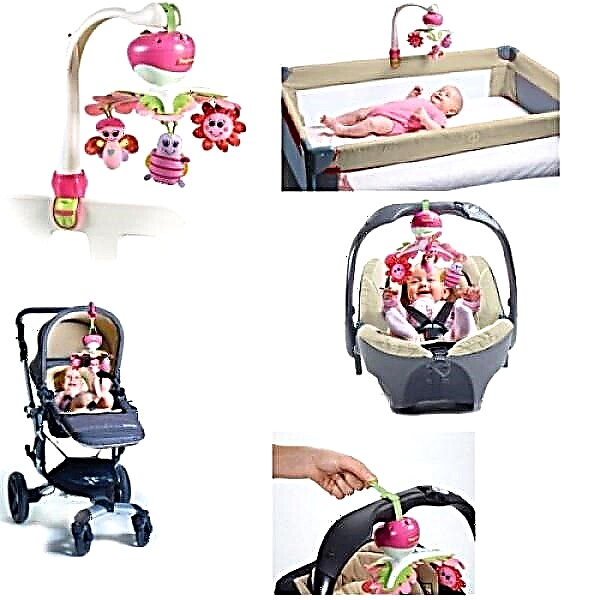Fever is the most common sign of illness in children, which every mother can determine on her own. Therefore, any parent should know how to measure the temperature of the baby and what are the temperature limits that are recognized as the norm for the baby.
The norm of body temperature in a newborn and in a baby
In healthy newborns, body temperature is unstable and can change quite quickly when the baby cries, eats, or just actively moves its arms and legs.
Such fluctuations are a sign of immaturity of temperature regulation mechanisms, and therefore there is always a risk of overheating or hypothermia.
A significant amount of heat generated by a newborn baby is released through the skin, sweat, or lungs when the baby is breathing.
Due to underdeveloped sweat glands, most of the heat loss occurs through breathing. Therefore, it is important to keep the air temperature in the nursery between 18-19 degrees Celsius.
If the baby is freezing, as evidenced by cold hands and feet, you need to raise the temperature in the room to 22-23 degrees.
 By about 3 months, such temperature drops pass, and a diurnal rhythm is established, which is characteristic of healthy infants. The temperature norm in the armpit for a baby is 36.6-37.3 degrees.
By about 3 months, such temperature drops pass, and a diurnal rhythm is established, which is characteristic of healthy infants. The temperature norm in the armpit for a baby is 36.6-37.3 degrees.
In an infant, body temperature changes throughout the day. Daily temperature changes in children vary more widely than in adults. Normal temperature fluctuates during the day in the range of 0.5-1.0 degrees. Its maximum increase is observed in the evening (17-19 hours) - up to 37.5 (sometimes higher); and the minimum decrease is observed in the morning hours (4-6 am) - up to 35.8 degrees. The temperature norm in children depends on how it is measured.
Varieties of thermometers
How long to measure the temperature depends on the type of thermometer that you use.
You can measure the temperature of a baby with a mercury, electronic or infrared thermometer.
Today, when there is a large selection, it is not recommended to measure the temperature of a small child with a mercury thermometer, even knowing that this method is time-tested.
An active baby is quite difficult to fix. By moving the handles vigorously, it can damage the glass body and cut itself, and the balls of mercury scatter throughout the room. In addition, there were cases when the baby bit off the tip of the thermometer.
We will analyze how to correctly measure the temperature in different ways, using thermometers that are produced by modern medical firms.
When measuring the temperature, it is necessary that the thermometer is in direct contact with the skin or mucous membrane of the child. Do not forget to check that the thermometer is working properly before measuring.
Temperature measurement methods
- Axillary (in the baby's armpit).
- Oral (in the mouth).
- Rectal (in the rectum).
- Ear (in the ear cavity).
- Frontal (on the forehead).
- Non-contact (at a distance, without touching the baby's skin).
Types of thermometers
- Mercury.
- Electronic or digital.
- Infrared.
The simplest and most commonly used mercury thermometer is low cost. It guarantees accurate temperature measurement. Its error is very small - up to 0.1 degrees. The disadvantage is its fragility and rather long measurement, the result is evaluated after 5-7 minutes.
 Electronic, or digital, thermometers are quite diverse. They are simple and safe to use as they do not contain glass and mercury. The result is evaluated 1-3 minutes after the start of the measurement, they give a signal when the temperature is measured.
Electronic, or digital, thermometers are quite diverse. They are simple and safe to use as they do not contain glass and mercury. The result is evaluated 1-3 minutes after the start of the measurement, they give a signal when the temperature is measured.
Their disadvantages:
- quite high cost;
- require battery replacement;
- the measurement error is up to 0.5 degrees;
- when the thermometer is loosely in contact with the skin, the measurement results are incorrect.
How to measure the temperature of a baby using different types of thermometers?
The normal axillary temperature is considered to be 35.8-37.3 degrees Celsius. The skin in the armpit must be dry when measured. Do not measure temperature if there is redness or rashes on the skin. It is necessary to firmly press the thermometer inserted into the armpit. The axillary temperature can be measured using a mercury thermometer and an electronic one.
 Oral temperature is normally 35.5-37.5 degrees Celsius. You can measure the temperature of the baby in the oral cavity using mercury and electronic thermometers.
Oral temperature is normally 35.5-37.5 degrees Celsius. You can measure the temperature of the baby in the oral cavity using mercury and electronic thermometers.
It has already been said that measuring the temperature using a mercury thermometer is not safe in children. This method requires a rather long measurement and close attention of adults.
Using an electronic thermometer is quite simple and safe. Temperature measurement does not take much time, 1-3 minutes is enough. During the measurement, the mother must control that the child does not push the thermometer with his tongue. Today, a thermometer is produced in the form of a nipple, which is very convenient if your baby is sucking on a nipple.
You cannot measure the temperature in the oral cavity immediately after feeding the baby and with stomatitis, the results will be inaccurate.
The temperature in the rectum (rectal) is normally 36.6-38.0 degrees. To measure it, the baby is placed with his stomach on his knees, while the baby's legs should hang down. The tip lubricated with Vaseline is inserted into the baby's anus. The temperature must be measured for at least 5 minutes. Measurement of the rectal temperature causes discomfort (unpleasant sensations) in the baby and the mother's fear of doing something wrong. Therefore, this method is most often used in a hospital. Rectal temperature can be determined using mercury and electronic thermometers.
The normal temperature in a child's ear is 35.8-38.0 degrees Celsius. Ear temperature is measured with an infrared thermometer. All infrared thermometers are expensive. The error in their measurements ranges from 0.1 to 1.0 degrees. Ear thermometers require the use of disposable pads. However, they are able to quickly (in a few seconds) measure the temperature, are safe and convenient to use.
Ear thermometers are not recommended for ear infections (otitis media). They show an overestimated result in a sore ear due to inflammation.
Normal frontal temperature is 35.5-37.5 degrees. It can be measured using an infrared thermometer. Thermal strips work well for travel convenience. They are attached to the child's forehead and get the result in 10-15 seconds. Thermal strips should not be bought as a home thermometer, they wear out quickly and have a large error.
 Non-contact temperature measurement is its determination at a distance of 4 to 15 cm from the baby. It provides an opportunity to measure the temperature without even touching the child. Non-contact thermometers are convenient for determining the temperature during sleep. Like all infrared thermometers, they are quick to measure and easy to use, but they have a measurement error and high cost.
Non-contact temperature measurement is its determination at a distance of 4 to 15 cm from the baby. It provides an opportunity to measure the temperature without even touching the child. Non-contact thermometers are convenient for determining the temperature during sleep. Like all infrared thermometers, they are quick to measure and easy to use, but they have a measurement error and high cost.
How to measure the temperature of a baby? Thermometer selection
It is most convenient to measure the temperature of a newborn with an electronic or infrared frontal thermometer.
According to the research results, the frontal thermometer gives the most accurate readings among infrared thermometers. A pacifier thermometer is also a convenient option for newborns.
However, the most reliable results are obtained by measuring rectal temperature. After feeding and when crying, the newborn's body temperature rises, so the best time to measure is when the baby is asleep.
When measuring temperature, do not forget that it is different and depends on the part of the body on which it is measured. Rectal temperature is 1 degree higher than axillary temperature, and ear temperature is 1.2 degrees higher.
Tips for Correct Temperature Measurement
- Check that the thermometer is working properly before use. Using a mercury thermometer, shake off the scale below 36.6 before starting the measurement.
- When evaluating the result, remember that the rate differs and depends on the method of measurement.
- You can not measure the temperature after feeding, while crying and after bathing the baby.
- If you are in doubt about the thermometer reading, measure the temperature with another thermometer and compare the readings.
Conclusion
Measuring temperature is easy enough. You just need to know the methods and basic rules of measurement. Choose a thermometer that is comfortable to use for you and your baby, age-appropriate and affordable. Follow the recommendations for your chosen measurement method and thermometer, and you will not have errors and problems with temperature measurement.



